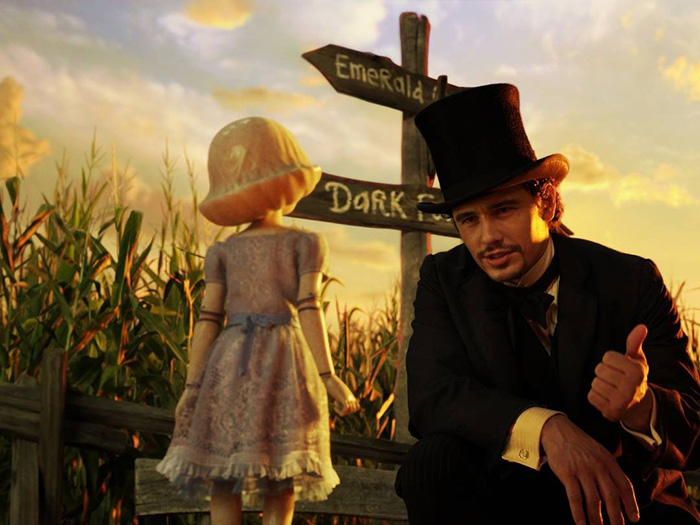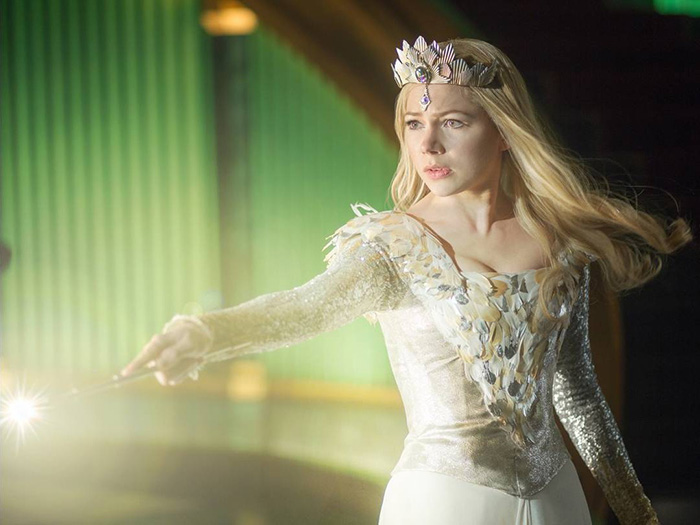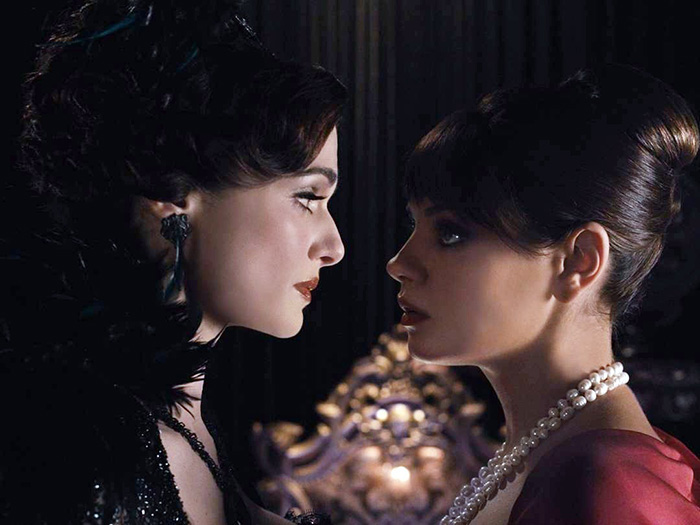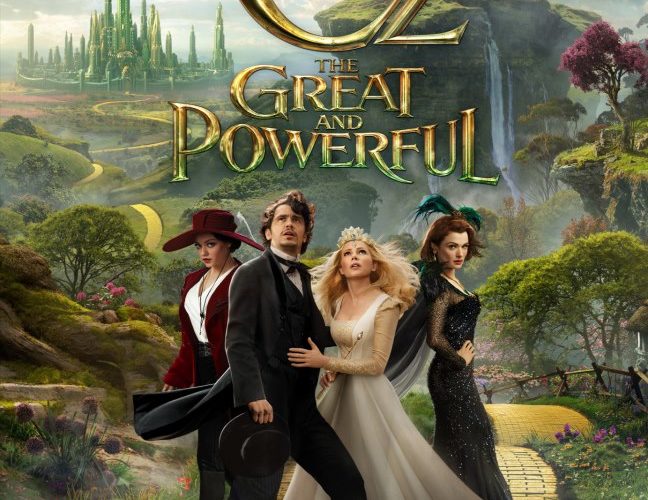I have to reevaluate my distaste for everything Oz not existing inside the mind of Dorothy Gale now that I’ve discovered Victor Fleming’s seminal work The Wizard of Oz wasn’t as faithful to its source material as I once assumed. I could never ignore how the simple attempt to craft a prequel within a fictitious fantasy world was in direct opposition to what made the original so timeless and important to lost children yearning for more than they have. And then I read how L. Frank Baum’s novel The Wonderful Wizard of Oz did in fact treat Oz as a real place—the flourish of actors playing dual roles to infer Dorothy was dreaming was added specifically for the film. With Oz real I can no longer dismiss Wicked or Sam Raimi’s Oz the Great and Powerful on principle after all.

The fact I accept them as part of canon, however, doesn’t make me a fan. If screenwriters Mitchell Kapner and David Lindsay-Abaire were going to go back to the source and allow for a story of Oz (James Franco) making his way to the land of witches, wizards, and munchkins, they would need to disregard The Wizard of Oz completely because the book and the 1939 film live in completely different universes. By no longer forcing the character of Oz to be one of Dorothy’s many imaginative representations of Professor Marvel, the idea of dual roles and “reality” infusing itself into “dream” is obsolete. You can’t have both. As soon as the affable flying monkey Finley appears in this new iteration with the same voice and mannerisms of Oz’s assistant Frank (Zach Braff), the whole concept shatters.
Perhaps I’m reading too much into mythology discrepancies and forgetting the important question, does it entertain? Should I waste so much time getting lost inside the rabbit hole of shared dreams and fantastical worlds when the morality tale about having faith in yourself and standing up for what’s right no matter the odds stacked against you is effectively told? Well, yes and no. What’s the point of prequels and sequels if they don’t work within the context of the overarching narrative? If you give your audience the chance to question the validity of what you’re doing, being able to let go of the artifice to become lost inside the story is all but impossible—especially when it’s something to which so many have a strong emotional bond.

This is why I couldn’t accept Tim Burton’s Alice and Wonderland’s attempt to hybridize the concepts of sequel and remake in one misguided cornucopia. It failed for me because it didn’t make sense. Oz the Great and Powerful, however, fails a little less because I don’t think it ever took itself as serious as Burton’s did. Maybe Disney learned their lesson a bit by catering it to children exclusively with overly broad performances, cheap laughs, and an overtly cutesy vibe that does ultimately overshadow the darker moments of witchcraft and war. There’s no mistaking this PG-rated work as something more than it was meant to be. Where Alice tried to ride the coattails of its eccentric auteur, Oz targets its demographic and sticks to it without overextending its reach.
The way it begins in black and white full frame with its con artist circus magician finding his selfishness getting the best of him before transporting to color wide screen via a devastating tornado brought back feelings of the magic I used to love. I actually began to feel overjoyed this new take on the material was a straight remake with Oz injected into the Dorothy role of unwitting savior—the dream of which was perhaps told to her by him in youth and thus subtly implanted for her own escapist fantasy. But alas, it was not to be as the filmmakers inject more than a few references to the farm girl’s visit from a lion made into a coward to the creators of scarecrows to the use of bubbled flying and sleepy fields of poppies. They couldn’t resist.
On its own, though, I do think Oz the Great and Powerful has enough magic to win over new audiences unaware of the stories that came before it. Depictions of love and lust may be a bit grown-up for younger fans, but ideas of friendship and playing to one’s strengths for victory are wonderfully displayed alongside comic relief and assistance from Finley, a China Girl (Joey King), and the Emerald City’s munchkin keeper Knuck (Tony Cox). Oz must find a way to open up to these strange, impossible creatures and be willing to evolve into the great man he always hoped he’d become. His heart must prove much purer than we assume it to be before gaining the trust of a kingdom and acquiring the confidence to lead a revolution.

It helps that the witches he alternately calls friends and enemies once true identities are revealed play so over-the-top too. Raimi makes sure there is a very distinct line between good and evil and Mila Kunis (Theodora), Rachel Weisz (Evanora), and Michelle Williams (Glinda) play their parts as such. The Wicked Witch of West was a scary character for kids back in the day and it’s great to see the filmmakers haven’t forgotten. As much a new genesis story of her creation as it is Oz’s, this film plants the seeds for Dorothy’s escape from Kansas years later. Franco’s lead may not be as endearing or empathetic as Miss Gale, but in this day and age a metamorphosis from checkered cowardice to emblematic courage is more relevant than an innocent girl’s luck conquering all.
Unfortunately, besides an amazing opening credit sequence that utilized 3D technology to perfection, the brilliant rendering of China Girl’s cracked glossy finish, and the glorious reinvention of Oz’s menacing smoke and mirror tricks, there’s nothing here you don’t already get from Fleming’s interpretation besides the discrepancies mentioned above. While visually stunning, its blatant artifice makes it a tough pill to swallow if you’re older than twelve. But perhaps that is the point. Maybe Oz is meant to expose a new generation to a classic universe now outdated. And in our present state of short attention spans and a need for visual stimulation in lieu of intellectual, I guess it gets the job done.
Oz the Great and Powerful opens Friday, March 8th.

